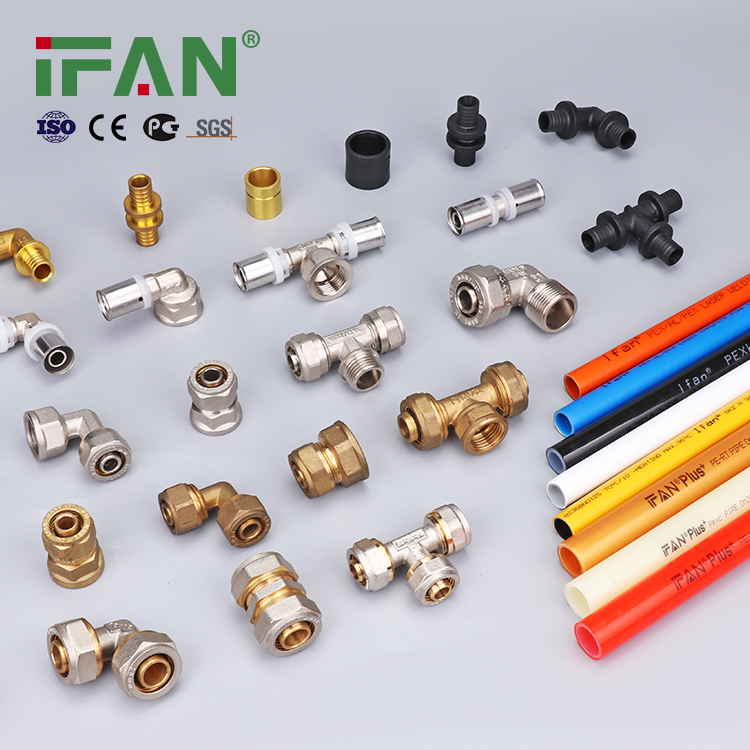What are the Disadvantages of PEX?
An In-Depth Look at the Potential Drawbacks of Crosslinked Polyethylene Plumbing Systems
While PEX has gained popularity as a plumbing material, it also comes with some potential drawbacks. Understanding the disadvantages of PEX allows making informed decisions about using it in residential and commercial systems. This article explores the downsides of crosslinked polyethylene tubing that engineers and builders should consider. IFAN factory with 30+ years of manufacturing experience supports color/size customization support free samples. Welcome to consult for catalog and free samples. This is our Facebook Website: www.facebook.com.

PEX Durability Concerns over Long Timeframes
One frequently cited disadvantage of PEX is uncertainty over very long-term material durability. PEX has only been used in the US for a few decades, so longevity data is limited.
Some studies have raised concerns over oxidative degradation and reduced fracture resistance of PEX plastics over timespans of 50+ years. However, other data found PEX retains integrity over these extended durations. More research will clarify PEX durability as the first-generation installations continue to age.
PEX Potential for Freeze Damage Expansion Issues
PEX tubing can suffer freeze damage during cold weather conditions. If a PEX line freezes and then thaws, it can expand by up to 8% in diameter. This expansion can potentially cause leakage at fittings and connections.
Copper and PVC pipes show minimal expansion when they freeze and thaw. While proper PEX installation should prevent freezing in the first place, unexpected temperature drops do occur. Careful design, insulation, and freeze prevention are necessary in cold climates.
PEX Limited High-Temperature Resistance
PEX tubing has a maximum continuous-use temperature rating of only 180°F to 200°F depending on the formulation. This makes PEX unsuitable for steam lines, high-temperature heating applications, or connections to water heaters without a mixing valve.
PEX starts losing strength and becomes more prone to failure as temperatures approach its rated limit. Builders should take the moderate high temperature threshold into account when deciding where to use PEX.
PEX Potential for Chemical Leaching
There is conflicting research about chemical leaching from PEX pipes and water contamination. One study found levels of VOCs and organic compounds like toluene and ETBE leaching from PEX were initially high but dropped off over time. However other research has shown PEX meets all health standards. This is an area requiring further study.
PEX Rodent Damage Vulnerabilities
PEX lacks the hardness and rigidity to resist rodent damage the way copper and PVC piping can. Rats and mice can chew through PEX tubing with their sharp teeth. Once compromised, leaks and sizable water damage can ensue.
Builders must take precautions to protect PEX lines from potential rodent damage. Keeping pipes away from foundations and walls reduces risk. Physical barriers or rodent deterrents may also be warranted in some cases.
PEX Lower Pressure Ratings than Hard Pipes
PEX tubing typically has a maximum pressure rating between 100 psi and 160 psi depending on size and formulation. Copper, PVC, and CPVC can commonly handle pressures of several hundred psi.
This makes hard pipe better suited for some high-pressure plumbing applications. However, PEX pressure capabilities remain adequate for typical residential and commercial building water distribution.
PEX Connection Limitations with Metal Fittings
PEX does not mate directly with metal plumbing fittings and valves. PEX-to-metal connections require an adapter or conversion fitting. This adds a potential leakage point and installation step compared to soldering copper or threading steel pipes.
However, metal-to-PEX transition fittings have proven highly reliable. Leaks result mainly from improper installation rather than inherent connection weaknesses.
PEX Potential for Sunlight Degradation
While flexible, PEX contains some instability with prolonged exposure to UV radiation from sunlight. Over many years, sunlight can start breaking down PEX material properties. However, most PEX gets installed hidden inside walls and floors, avoiding this degradation mechanism.
For periodic above-ground exposure, PEX holds up reasonably well. But it does not match PVC’s UV resistance in applications like exterior piping. Painting or protecting PEX tubing is recommended to prevent solar damage.
PEX Workmanship and Quality Control are Critical
PEX requires proper installation and workmanship to avoid potential issues like leakage. Faulty cold expansion connections present risks. PEX is more forgiving than rigid piping, but still demands conscientious handling and joining.
Similarly, substandard manufacturing can produce PEX tubing prone to problems like fracture splitting. Reputable brands and product testing help avoid quality issues resulting in field failure.
PEX Essential to Weigh PEX Disadvantages Against Benefits
PEX provides significant advantages for plumbing systems that must be weighed against the potential drawbacks. Proper design, material selection, and installation allows mitigating many disadvantages. For certain applications, however, traditional materials may be preferable over PEX depending on the tradeoffs. Understanding vulnerabilities allows engineers and builders to make informed decisions.
IFAN
IFAN factory started in 1993. And IFAN has a workshop of 120000 square meters with 610 staff. IFAN can design and produce all plumbing pipe and fitting including PPR, PVC, CPVC PPSU HDPE PEXA PEXB PERT pipe and fitting, brass fitting, brass ball valve, heating system, gas system, sanitary faucets, and hose, In the past 30 years, IFAN has never forgotten his mission-To protect health and safety. And IFAN factory uses the best materials to produce high-quality pipe and fittings with an automatic production line and high-tech quality control machines.

